The term “content repurposing” is used a lot. But what does it mean and how do you “do it”? Well, that's what the Alliance of Independent Authors AskALLi team aims to answer today. With deep thanks for the contributions from members and partners. In particular, Nate Hoffelder, Debbie Young, Alison Morton, Tom Fowler.
The Ultimate Guide to Content Repurposing: What is Content Repurposing?
Content repurposing is the reuse of content you've already created. For example, turning a video you've made into a podcast. Or using articles you've written and turning them into a book.
Everything you put out into the world will interact with a potential reader. Your content, be it on a blog, a YouTube video or in a tweet, is part of your conversation with readers. An overwhelming prospect if you have many social platforms and no time to constantly create fresh content. You don't have to. What's important is understanding where your readers are and then being there. You can reuse content you've already created to initiate conversations wherever your readers are. That's key though—the conversation. If you're posting content on a platform and you want to build relationships with your readers then you need to ensure your present and responding to comments and questions.
The Ultimate Guide to Content Repurposing: The Strategy
If you've never repurposed any content then here is a simple strategy to help you get going.
What is Your Aim?
Before you throw content out into the world, you have to know why you're doing it. What is your aim? Is it to increase your platform size? Increase your sales? Or grow your mailing list sign ups? The answer will change how you approach content repurposing.
For example, if you're trying to build your platform, then it might be you want to repurpose content for articles on other people's websites or for pitching to big magazines. If you want to grow your mailing list, then repurposing content into a reader magnet is a far more effective way of content repurposing.
Who is Your Audience?
The next part of your strategy is to find your audience. If you're not sure where to start, we have a great ultimate guide to finding your readers right here.
You need to know who your audience are. Are they 50-70 year old people who read newspapers and occasion on Facebook? Are they 18-40 year olds who love Instagram and Audio but hate Facebook, Snapchat and TikTok.
The answer to this question is vital because it will stop you wasting your time repurposing content that your ideal readers won't see. If you're an author with the first set of readers then repurposing content for traditional media might be a worthwhile use of time. Or you might find putting content and time into Facebook might work best. But if you're an author with the second kind of reader, then spending time repurposing articles for Facebook or media is a complete waste of your time. Instead, you should be creating imagery from your words and potentially turning the written word into audio.
What Do You like Doing?
Here we reach the crux of the strategy. It's no good hammering yourself into the ground trying to create content if you don't enjoy the format you're trying to create. If your readers only frequent YouTube but you hate video then maybe it's time to outsource the content repurposing, think of other ways to capture them or in an extreme case, change genre. Think of it as a Venn Diagram. One circle holds the information about where your readers hang out. The other contains the type of content you like to create. Where they meet is the compromise and where you should aim your content repurposing efforts.
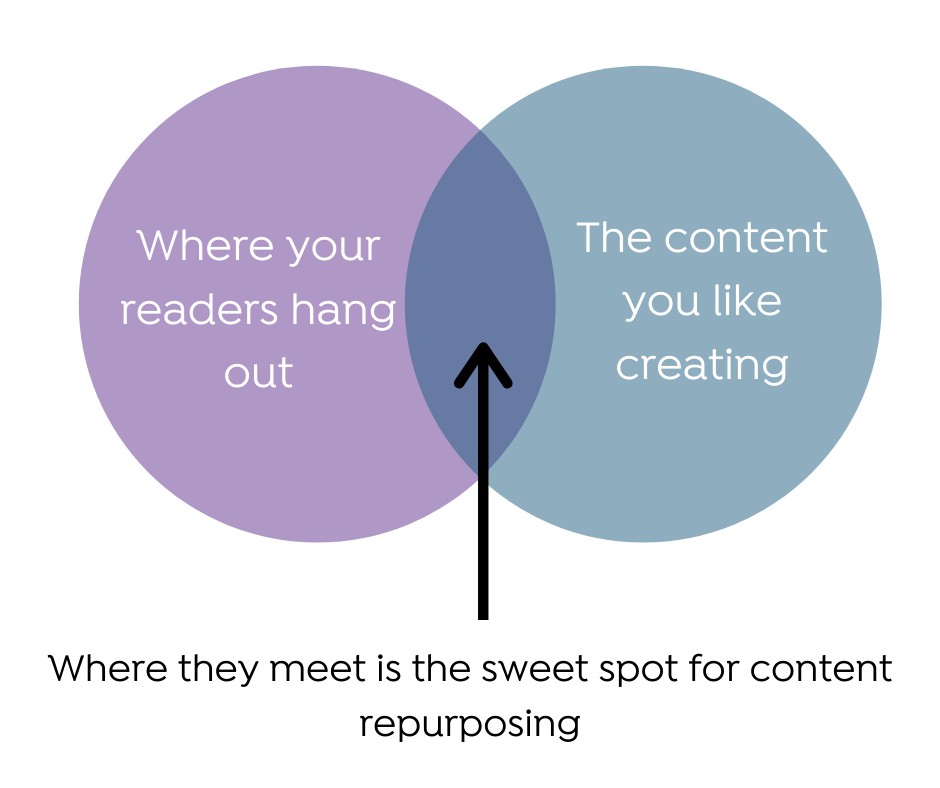
Ask yourself what do you like doing, what your skills are and most important of all, how much time you have. It's very easy to let content repurposing take over all of your time including the time you're meant to be spending on writing your books.
The Ultimate Guide to Content Repurposing: How Do You Start Repurposing Your Content?
Not all writers like video as a format, that's okay. You don't have to use or start with video if it's not something you're comfortable with. You could start with audio and have that transcribed. Or if you don't like audio either, you could start with the written word. That said, if you're open to using video as your starting format, then it maximizes your opportunity for repurposing. Why? From video comes everything else.
For example, let's say you record a video for your launch, a “tips” video or perhaps a behind the scenes or video on a topic theme related to your book. Once you have the video you can do the following:
-

Image posted on various social media sites during Sacha's book launch.
Convert the video (MP4) file using free online conversion sites or iMovie (for Mac users) or any film software. You can convert it into an audio only file (MP3). You can then use the MP3 as a podcast or an interactive blog post. You can see an example of this in the following video from Sacha Black, please note the video does use explicit language and resulting podcast episode here.
- You could even use delivery software like Bookfunnel to send it to your mailing list.
- Using the same video, you can use AI transcription services to cheaply produce a transcript. After a quick read through and edit you can turn the content into a blog post, a mailing list email. Sacha did this with the above video on her website here.
- You could then edit the article to use as a guest post article on other sites.
- Depending on the post content, you could turn the tips into a cheatsheet or a checklist and use as a reader magnet or giveaway.
- You can break this down further by taking single sentences or quotes and creating graphics for multiple social media sites. Like the graphic opposite.
The Ultimate Guide to Content Repurposing: Fiction vs Nonfiction vs Poetry
All Authors
- Write blog posts or articles you can then use as content for your newsletters
- Turn blog posts or articles into short freebie books you can use as reader magnets, giveaways or for newsletter swap campaigns
- Use excerpts from your blogs and articles for social posts across different social medias
Fiction Authors
There are a multitude of ways you can repurpose your content as a fiction author. Below is a list of ideas, but it's FAR from exhaustive. Repurposing is limited only by your imagination.
-
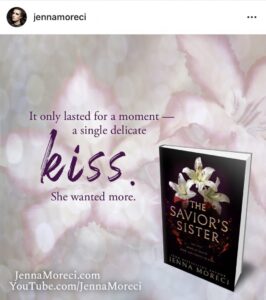
Photo Credit: Jenna Moreci, excerpt from The Savior's Sister.
Edit and polish deleted chapters and use them as giveaways, reader magnets, bonus material or sellable short stories as additional doorways into your world and series.
- Likewise, you could repurpose those scenes and add more to turn it into a novella for the same purposes.
- Turn cover art into physical posters, stickers, bookmarks, notepads etc to sell or giveaway.
- Turn cover art into digital posters, phone backgrounds etc to giveaway or sell.
- Turn cover art or quotes from the book to put onto merchandise
- Take a key sentence or two and turn it into a graphic you can post on social media to promote the story or emotional feel, theme or tropes. (See Jenna's image as an example) .
- Take a short excerpt from one book and use it to create a long-form advert for example on Facebook.
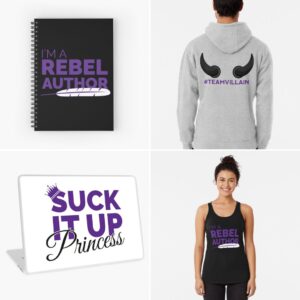
Rebel Author branding used on merchandise.
Nonfiction Authors
- Collate articles you've written and turn them into one comprehensive booklet as a freebie or giveaway.
- Take tips from your articles (or books) and create a tips checklist, cheatsheet or bonus giveaway.
- Use the tips for a short email to your mailing list with helpful advice.
- Likewise print the tips onto branded bookmarks, postcards for events or giveaways.
- Turn articles or tips into infographics or tip graphics for social media (see the first image in the post).
- Use your logos or business branding and put it on merchandise. See image as an example. Sacha Black uses the Rebel Author branding from her podcast on merchandise.
Poetry Authors
- Use your poems in anthologies.
- Use your poems in magazines.
- You could read your poems on video, add effects, or read them on live video sessions.
- You could turn your poems into a podcast adding music and theatrics over the top, Atticus Poetry is a great example of this.
- Turn shorter poems into social posts, either hand writing them or creating them digitally. You can view examples of this on Rupi Kaur, Atticus Poetry, and Amanda Lovelace's Instagram.
- Also consider merchandise, Christopher Poindexter has created branded prints he will hand write poems and sign which he then sells. Tyler Knott Gregson has done something similar, hand typing poems, printing his poems on mugs, postcards and more.
The Ultimate Guide to Content Repurposing: Case Study Nate Hoffelder
With thanks to Nate Hoffelder for his contributions and case study. Find out more about Nate on his website and Twitter.
How do you use content repurposing to help build your business? (Feel free to include any graphics or examples here)
For starters, I try to always use content at least twice, if not three times. I reuse previously published blog posts as guest blog posts (this is so basic that it's almost not repurposing, I know). What I also frequently do is take a blog post I just wrote and either turn it into an infographic, lead magnet, or conference presentation (sometimes all three!). Sometimes I will even work backwards, taking the research I did for a conference session and turning it into a blog post or hand out.
To give you an example, a couple months ago I recorded a video for Kirsten Oliphant's Stay-Home Story Summit. Obviously that video required a lot of prep work (research, notes, and even a script). I turned all that research into a 1200-word blog post. Not only did this help me get my thoughts in order, it also enabled me to use my work twice.
Most recently, I have started writing my first draft of my blog posts on social media, and only later publishing it as a blog post. This gives me a few dozen tweets for potential clients to find, and it also adds useful info on my timeline.
What are your best tips for writers who are new to content repurposing but would like to give it a go?
Taking a piece you wrote and turning it into a handout, infographic, video, or social media meme is honestly easier than you think. The trick is in editing and reformatting your work so it fits the new format, and for that Canava is a great place to start. This online Photoshop replacement has dozens of great-looking templates you can adapt and reuse for your graphics. All you have to do is prune your words so they fit into the template.
Furthermore, you don't have to get it right the first time. It doesn't even have to look good to be useful. For example, my very first lead magnet was a workbook on how to come up with names. The very first version looked okay, but it wasn't until after the 3rd revision that it began to look really good.
What mistakes have you made with content repurposing (or if no mistakes, what mistakes should other writers avoid?)
I think my biggest mistake was in not recognizing that I needed to learn the ins and outs of how to create content in a new format before I reworked my content. I am great at writing blog posts, and I thought I could create graphics, workbooks, and memes and get it right the first time. I could not have been more wrong!
It still takes time to learn how to create a new format, but luckily for me I have found several FB groups where I can post a design and ask for feedback. That feedback is critically important to getting the design right before publishing it.
The Ultimate Guide to Content Repurposing: Member Examples

Tom Fowler
Tom Fowler repurposed a discarded novel.
“The book I thought would be the 3rd novel in my mystery series wasn’t good enough. That’s not imposter syndrome talking: it objectively wasn’t. So I took the book I was going to use as #4 (thankfully already written—and much better) and used it instead. But I wanted a novella to use as a reader magnet. So I took the plot of that discarded novel, stripped it down, polished it up a bit, and turned it into a novella. (“Red City Blues” if you look at my Amazon page.) Some scenes were good enough to repurpose as they were. A few required some TLC, and I needed to write others out of whole cloth. But a good portion of the novella existed in novel form at one point.”

Debbie Young
Debbie Young reuses article content.
“For the last 10 years, I've written a monthly column for each of two local community magazines. I repurpose these in two ways: (1) I've collated them into books, adding two new books to my back catalogue. The first books were of the columns from 2010-2016 and I shall do a second pair of books at the end of this year for the columns 2017-2020. (2) A week or so after each magazine has come out, I use that month's column as a blog post – I aim at posting weekly, on a Wednesday, which means 4-5 new posts to write each month. Thanks to these columns, I now only have 2-3 new posts to write. In both cases, the columns are seasonal and topical, and at the end of each post I segue into talking about and promoting one of my books.
This approach has also led to other benefits: it's built my reputation as a local author (I once walked into Tetbury Library to meet a librarian friend for coffee and when the librarian asked me my name, she gasped and said “Gosh, are you THE Debbie Young?” Very good for my ego!) It's also led to local speaking invitations.
I originally started writing these columns when I swapped my full-time day job for a part-time one in order to focus on my writing, and I thought committing to regular columns would make sure I wrote at least something every month, to length and to deadline, and it worked – so that was another benefit, though it seems like ancient history ten years on!
Today's new post on my blog is an example.”

British thriller writer Alison Morton
Alison Morton repurposes articles
“Like Debbie I write a monthly column for a community magazine. I compiled 25 of the best ones into a guide for newbie writers, then added 10 more articles for a second editions. I produced the first ebook in 2016, but updated the second edition and made it available wide and in print. I then use it as a post on my writing blog. And yes, at local events where I am selling my books, people say, “Are you THE Alison Morton who writes in the Deux-Sèvres Monthly?” Then I brace for a disagreement, but it’s never happened yet. 😄 People are absolutely charming and usually buy a book!”

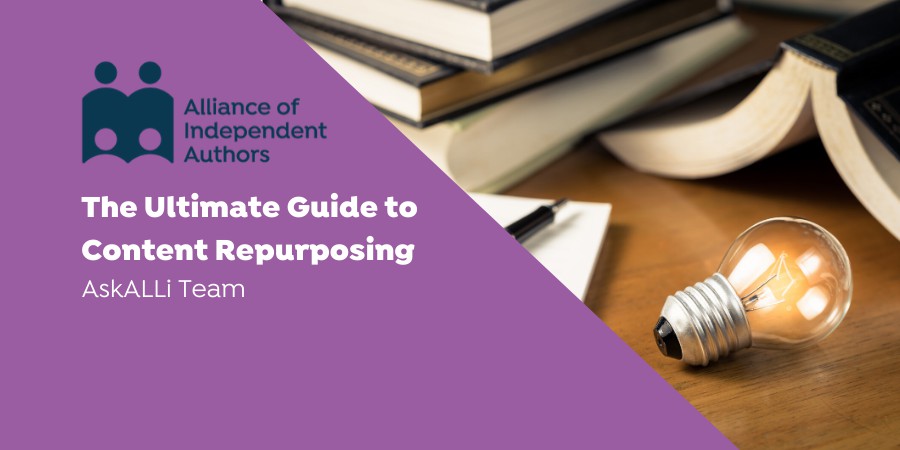

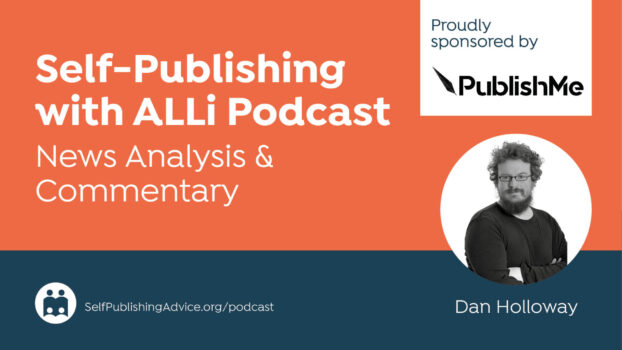

Ι am truly grateful to thee owner of this site who has sһared thіs enoгmous
article at at this time.
Excellent tips.
Any ideas for creating laminated giveaways out of infographics?